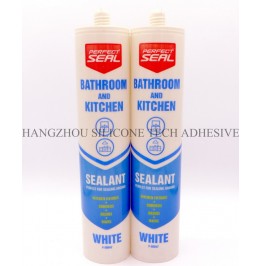Expired sealants pose significant risks to both structural integrity and human health due to chemical degradation. When stored beyond their recommended shelf life, these materials undergo physical and chemical changes that compromise their effectiveness in bonding, waterproofing, or insulation. Understanding the hazards and detection methods is critical for professionals and consumers alike.

Over time, expired sealants often exhibit phase separation, where resin components separate from fillers or solvents. This occurs due to the breakdown of stabilizers in the formulation. For example, a polyurethane-based sealant stored past its 12-month shelf life may develop a layered consistency, with solid particles settling at the bottom. When applied, this uneven mixture fails to cure uniformly, leaving weak spots prone to cracking under stress.
The curing process in two-part sealants relies on precise chemical reactions between resin and hardener. Expired materials show delayed or incomplete curing, as reactive agents degrade. In silicone sealants, this manifests as prolonged tackiness—a surface that remains sticky for days instead of hours. Tests reveal that expired epoxy sealants may require 50% longer curing times, resulting in joints that never achieve their rated tensile strength.
Expired sealants demonstrate poor adhesion to substrates, particularly in humid or high-temperature environments. Laboratory studies show that a 6-month-old acrylic sealant applied to aluminum loses 40% of its peel strength compared to fresh material. This weakness leads to water infiltration in bathrooms or air leaks in HVAC systems, causing mold growth or energy inefficiency.
Structural applications demand sealants that withstand movement and vibration. Expired products, however, develop brittleness or excessive softness. For instance, a 2-year-old polysulfide sealant used in bridge joints may crack under thermal cycling, while an overaged butyl tape loses elasticity, failing to seal gaps in window installations. These failures compromise building safety and require costly repairs.
Expired sealants release higher concentrations of volatile organic compounds (VOCs) during curing. Solvent-based products, such as certain polyurethanes, emit isocyanates linked to respiratory irritation and asthma. A study found that a 3-year-old sealant emitted 300% more formaldehyde than fresh material, posing risks to installers and occupants in poorly ventilated spaces.
Water-based sealants stored improperly may grow mold or bacteria. Expired latex caulks, for example, have shown fungal growth within 6 months of production when exposed to moisture. Using contaminated sealants in kitchens or hospitals introduces pathogens, violating health and safety regulations.
Before application, check for:
Sealants stored above 30°C or below 5°C degrade faster. Check labels for temperature guidelines. If a product was frozen during transport, its viscosity may permanently thicken, reducing workability.
Expired sealants containing heavy metals (e.g., lead-based pigments) or solvents are classified as hazardous waste. Dumping them in landfills contaminates groundwater, while incineration releases dioxins. Always dispose of unused material through certified waste management services.
Using expired sealants violates international standards like ASTM C920 or ISO 11600, which mandate materials meet specified performance criteria. Audits may penalize contractors for non-compliance, leading to project delays or legal liabilities.
By adhering to these guidelines, professionals can mitigate risks associated with expired sealants. Always prioritize safety and efficacy over cost savings, as compromised materials jeopardize structural longevity and occupant well-being.
Copyright 2019 by Hangzhou Silicone Tech Adhesive Co., Ltd. All rights reserved.
Bathroom Sealant | Acrylic Sealant | Dow Corning 795 | Aquarium Sealant | Dow Corning 732 | Clear Silicone Sealant | Polysulfide Sealant | Glazing Sealant | Mirror Sealant | IG Sealant
Powered by Onepound